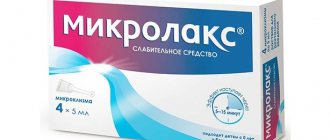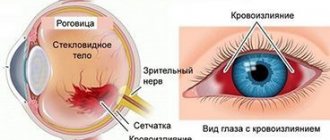pharmachologic effect
Bronchodilator, methylxanthine derivative; inhibits phosphodiesterase, increases the accumulation of cyclic adenosine monophosphate (cAMP) in tissues, blocks adenosine (purine) receptors; reduces the flow of calcium ions through the channels of cell membranes, reduces the contractile activity of smooth muscles.
Relaxes the bronchial muscles, stimulates the respiratory center and improves alveolar ventilation, which ultimately leads to a reduction in the severity and frequency of apnea episodes.
It has a stimulating effect on the activity of the heart, increases the strength and frequency of heart contractions, increases coronary blood flow and myocardial oxygen demand. Reduces the tone of blood vessels (mainly those of the brain, skin and kidneys). It has a peripheral venodilating effect, reduces pulmonary vascular resistance, and lowers pressure in the pulmonary circulation. Increases renal blood flow and has a moderate diuretic effect. Expands extrahepatic bile ducts.
Stabilizes mast cell membranes, inhibits the release of mediators of allergic reactions.
Inhibits platelet aggregation (suppresses platelet activating factor and prostaglandin E2 alpha), increases the resistance of red blood cells to deformation (improves the rheological properties of blood), reduces thrombus formation and normalizes microcirculation.
It has a tocolytic effect, increases the acidity of gastric juice. When used in large doses, it has an epileptogenic effect.
Pharmacokinetics
Bioavailability and absorption kinetics depend on the dosage form of the drug. Bioavailability for liquid dosage forms is 90-100%. The time to reach the maximum concentration of the drug in plasma with intravenous administration of 0.3 g is 15 minutes, the maximum concentration of the drug in the blood is 7 mcg/ml. The volume of distribution is in the range of 0.3-0.7 l/kg (30-70% of “ideal” body weight), with an average of 0.45 l/kg. Communication with plasma proteins in adults - 60%, in newborns - 36%, in patients with liver cirrhosis - 36%. Penetrates into breast milk (10% of the dose taken), through the placental barrier (the concentration in the fetal blood serum is slightly higher than in the maternal serum).
Aminophylline exhibits bronchodilating properties in concentrations of 10-20 mcg/ml. Concentrations above 20 mg/ml are toxic. The stimulating effect on the respiratory center is realized at a lower content of the drug in the blood - 5-10 mcg/ml.
Metabolized at physiological pH values with the release of free theophylline, which is further metabolized in the liver with the participation of several cytochrome P450 isoenzymes. As a result, 1,3-dimethyluric acid (45-55%) is formed, which has pharmacological activity, but is 1-5 times inferior to theophylline. Caffeine is an active metabolite and is formed in small quantities, with the exception of premature newborns and children under 6 months, in whom, due to the extremely long half-life of caffeine, its significant accumulation in the body occurs (up to 30% of that for aminophylline).
In children over 3 years of age and in adults, the phenomenon of caffeine accumulation is absent.
The half-life in newborns and children under 6 months is more than 24 hours; in children older than 6 months. — 3.7 hours; in adults - 8.7 hours; for “smokers” (20-40 cigarettes per day) - 4-5 hours (after quitting smoking, pharmacokinetics normalize after 3-4 months); in adults with chronic obstructive pulmonary disease, pulmonary heart disease and pulmonary heart failure - over 24 hours. Excreted by the kidneys. In newborns, about 50% of theophylline is excreted unchanged in the urine versus 10% in adults, which is associated with insufficient activity of liver enzymes.
Pharmacological effects
The main effect of the drug is antispasmodic. However, it also has other effects on the human body, namely tocolytic, diuretic and bronchodilator.
According to the Vidal classifier, Eufillin is included in the pharmacological group of phosphodiesterase inhibitors.
What does Eufillin help with? Indications for use
Indications for use of the drug Eufillin may vary slightly depending on the form of release. Tablets are most often prescribed for:
- Bronchial asthma of varying severity.
- Chronic obstructive pulmonary disease.
- Paroxysmal attacks of apnea at night.
- Right ventricular heart failure.
- Emphysema.
The injection form of the drug is used for:
- Cerebrovascular insufficiency of the brain (the drug is used in combination with other drugs and helps reduce intracranial pressure).
- Pulmonary hypertension.
- Left ventricular heart failure (also used in combination with a number of other drugs).
- For diseases of the respiratory system accompanied by spasm and broncho-obstructive syndrome (COPD, emphysema, bronchial asthma).
Contraindications
Hypersensitivity to the drug (including other xanthine derivatives: caffeine, pentoxifylline, theobromine), severe arterial hypotension or hypertension, paroxysmal tachycardia, extrasystole, myocardial infarction with cardiac arrhythmias, epilepsy, increased convulsive readiness, hypertrophic obstructive cardiomyopathy , thyrotoxicosis, pulmonary edema, severe coronary insufficiency, liver and/or renal failure, hemorrhagic stroke, retinal hemorrhage, recent history of bleeding.
Carefully
Severe coronary insufficiency (acute phase of myocardial infarction, angina pectoris), widespread vascular atherosclerosis, hypertrophic obstructive cardiomyopathy, frequent ventricular extrasystole, increased convulsive readiness, liver and/or renal failure, peptic ulcer of the stomach and duodenum (history), bleeding from gastrointestinal tract in a recent history, uncontrolled hypothyroidism (possibility of cumulation) or thyrotoxicosis, prolonged hyperthermia, gastroesophageal reflux, prostatic hypertrophy, children under 14 years of age, old age (over 55 years).
Prescribe with caution simultaneously with anticoagulants, with other theophylline and purine derivatives.
Use during pregnancy and breastfeeding
If necessary, prescribing the drug during pregnancy should be compared
expected benefit to the mother and potential risk to the fetus.
If it is necessary to use the drug during lactation, breastfeeding should be discontinued.
Newborns whose mothers received aminophylline during pregnancy (especially the third trimester) require medical supervision to monitor possible symptoms of methylxanthine intoxication.
Contraindications and side effects of Eufillin
When using any drug, it is necessary to take into account contraindications to its use. This will avoid the occurrence of severe side effects or complications of concomitant diseases.
The use of Eufillin is not permitted in the following cases:
- Children under 3 years of age;
- Increased individual sensitivity to the drug;
- High or low blood pressure;
- Tachycardia (high heart rate);
- Epilepsy;
- Liver and kidney diseases;
- Diseases of the stomach and duodenum;
- Simultaneous use of ephedrine (Adrenaline).
Adverse side effects of the drug can be expressed by such phenomena as:
- Anxiety, sleep disturbance;
- The appearance of tremors, convulsions;
- Heart rhythm disturbances;
- Decreased blood pressure;
- Nausea, vomiting;
- Decreased appetite, up to anorexia with prolonged use;
- Exacerbation of stomach diseases;
- Diarrhea;
- The appearance of blood in the urine;
- Allergic reactions in the form of rashes, itching;
- Increased body temperature;
- Decreased blood sugar levels;
- A painful lump may appear at the injection site.
Considering that the development of some side effects may require emergency care, uncontrolled use of Eufillin should be stopped.
Application of Eufillin in neurology
Eufillin for electrophoresis in children is widely used in neurology from infancy. The procedure of exposure to direct electric current is considered harmless, painless and effective. During this procedure, the baby may only feel a slight tingling sensation at the site of the procedure.
But despite the fact that such treatment is considered safe, there are a number of contraindications when this type of exposure is not recommended, these are:
- Skin allergic diseases;
- Infectious skin lesions;
- Tendency to bleed;
- Epilepsy;
- Intolerance to the effects of current;
- Systemic blood diseases;
- Oncological diseases.
Electrophoresis with aminophylline has a beneficial effect on the nervous system. This improves blood circulation and nutrition of nervous system cells. Muscle tone is normalized and muscle spasm is relieved. This procedure also has a beneficial effect on intracranial pressure, reducing it when it increases.
After just a few procedures, mothers notice the positive effects of physiotherapeutic treatment. At the same time, the tone in the arms and legs is normalized, movements become more confident. The child learns new skills more easily. There is an improvement in sleep and general condition.
The percentage of aminophylline for electrophoresis for children is usually taken within 2.4%. To obtain the desired concentration, dilution with distilled water is used.
The methodology for carrying out the procedure consists of the following steps:
- 3 sheets of filter paper are moistened in 20 ml of the prepared medicinal solution.
- Place damp paper on the affected area.
- An ion exchange membrane and a hydrophilic gasket are placed on top.
- The electrode is connected and all layers are fixed with a soft bandage.
- The procedure is carried out within 15 minutes.
When the electrode is positioned in the neck area, the blood vessels of the brain are affected. If electrophoresis with aminophylline is performed on the child’s lower back, then in addition to the effect on the kidneys, intracranial hypertension is reduced through a diuretic effect.
After electrophoresis, you cannot immediately go outside, because the procedure has a warming effect, and a rare temperature change can cause a reflex vascular spasm, which will negatively affect the child’s condition. It is recommended to stay indoors for 30 minutes.
The use of Eufillin in the treatment of cough
The main pharmaceutical effect of Eufillin is its effect on the bronchopulmonary system. Thanks to its therapeutic effects, bronchial patency improves, mucus is removed due to the activation of the ciliated epithelium, spasm and swelling are relieved. The main purpose of its use is the treatment of broncho-obstructive syndrome.
Bronchial obstruction syndrome occurs in childhood more often due to complications of a viral respiratory infection or during an attack of bronchial asthma.
Manifestations of broncho-obstructive syndrome are expressed by such symptoms as:
- Severe cough with sputum production;
- Difficulty in exhaling;
- The exhalation is whistling, prolonged;
- The appearance of shortness of breath - rapid breathing;
- Cyanosis (blue discoloration) of the area around the mouth.
If a child of any age has these symptoms, you should immediately seek medical help.
When Eufillin is used in treatment, the instructions for children do not give exact dosages. This is due to the fact that the amount of the required drug is strictly individual and is calculated by the doctor depending on the clinical situation, age and weight of the child.
Eufillin can be used in tablet form from the age of 12 in the form of inhalations and intravenous injections.
If a doctor has prescribed Euphyllin tablets for children with a cough, the dosage is determined by the pediatrician. It must be taken strictly in the prescribed quantity, dividing the daily requirement into 4 doses. The drug should be taken with plenty of water. The course of treatment can last from several days to weeks. The duration of taking the medication depends on the diagnosis and the response of clinical manifestations during treatment.
Intravenous Eufillin is prescribed to children with bronchitis only as an emergency method. If, against the background of an inflammatory process, broncho-obstructive syndrome with signs of respiratory failure has developed, then in the absence of other bronchodilators, a 2.4% solution of Eufillin, previously diluted with 0.9% saline, is administered intravenously.
When treating bronchitis, compliance with the drinking regime is very important. For easy removal of sputum, it should be liquid. Also, an increase in body temperature also causes fluid loss. Considering the fact that Eufillin has a diuretic effect, you should not forget to constantly give your child warm drinks.
When treating with Eufillin tablets, it is not advisable to drink drinks containing caffeine - green and black tea, coffee, sweet soda.
Inhalation therapy with Eufillin
How is Eufillin used for laryngitis in children? In order to answer this question, you need to remember that laryngitis is an inflammation of the larynx, which belongs to the upper respiratory tract. It is often caused in childhood by various viral agents.
The main clinical manifestations of inflammation of the larynx are:
- “barking” cough and rough hoarse voice,
- with the development of stenosis, difficulty breathing appears with the gradual development of respiratory failure.
If Eufillin is used in therapy, inhalation for children at home is prescribed only by a doctor. To treat the upper respiratory tract, pore inhalers are used; for the lower respiratory tract, inhalations are carried out using a nebulizer.
Contraindications to inhalation therapy are:
- Child's age is less than 1 year;
- Body temperature is above 37.5°C at the time of the procedure;
- Inflammation of the middle ear (otitis);
- Damage to the oral mucosa;
- Presence of blood in sputum.
If Eufillin is used in inhalation therapy, the doctor should explain to children how to dilute the solution for inhalation. If for some reason the child stays at home and needs inhalations with Eufillin, then the medicine is taken in the following proportion: for 10 ml of saline solution 0.9%, take 1-2 ml of Euphyllin 2.4% solution.
The procedure is carried out when the child is calm, for 10 minutes. The frequency of procedures, depending on what the doctor prescribed, can be 1-4 times a day.
special instructions
Use caution when consuming large amounts of caffeine-containing foods or drinks during treatment.
Elderly patients are recommended to reduce the dose of the drug due to its slow elimination from the body.
Smoking patients are advised to increase the dose due to the accelerated elimination of the drug from the body.
Before use, the drug solution must be warmed to body temperature.
Impact on the ability to drive vehicles and machinery.
During the treatment period, care must be taken when driving vehicles and engaging in other potentially hazardous activities that require increased concentration and speed of psychomotor reactions.
Directions for use and doses
Adults are injected into a vein slowly (over 4-6 minutes) with 5-10 ml of a solution with a concentration of 24 mg/ml (0.12-0.24 g), which is pre-diluted in 10-20 ml of isotonic sodium chloride solution. If palpitations, dizziness, or nausea occur, the rate of administration is slowed down or switched to drip administration, for which 10-20 ml of a solution with a concentration of 24 mg/ml (0.24-0.48 g) is diluted in 100-150 ml of isotonic sodium chloride solution; administered at a rate of 30-50 drops per minute. Eufillin is administered parenterally up to 3 times a day, for no more than 14 days.
Higher doses of aminophylline for adults into a vein: single - 0.25 g, daily - 0.5 g.
Children under 14 years of age are advised to use the drug with caution due to possible side effects.
However, if necessary, children are administered aminophylline intravenously at a single dose of 2-3 mg/kg, preferably by drip.
Higher doses for children intravenously: single - 3 mg/kg, daily - up to 3 months of age. -0.03-0.06 g,
from 4 to 12 months. - 0.06-0.09 g,
from 2 to 3 years - 0.09-0.12 g,
from 4 to 7 years - 0.12-0.24 g,
from 8 to 18 years - 0.25-0.5 g.
Eufillin instructions for use
The single and daily dose of the drug is selected depending on the form of release, the disease and the age of the patient.
Adult patients are recommended to take 15 milligrams per kg of body weight 1 to 3 times a day. The pediatric dosage is 7-10 mg per kilogram of body weight 4 times a day. The course of treatment with tablets can vary from 3 days to several months.
When administered intravenously, the average daily dose ranges from 400 to 800 milligrams.
While taking the drug, it is necessary to monitor blood pressure, blood glucose and heart rate daily.
Side effect
From the nervous system:
dizziness, headache, insomnia, agitation, anxiety, irritability, tremor, convulsions.
From the cardiovascular system
: palpitations, tachycardia (including in the fetus when taken by a pregnant woman in the third trimester), arrhythmias, decreased blood pressure, cardialgia, increased frequency of angina attacks.
From the digestive system:
gastralgia, nausea, vomiting, gastroesophageal reflux, heartburn, exacerbation of peptic ulcer, diarrhea, with long-term use - loss of appetite.
Allergic reactions
: skin rash, skin itching, fever, exfoliative dermatitis.
Other:
chest pain, tachypnea, feeling of “hot flashes” in the face, albuminuria, hematuria, hypoglycemia, increased diuresis, increased sweating.
Side effects decrease with decreasing dosage of the drug.
Local reactions:
compaction, hyperemia, pain at the injection site.
Overdose (drug intoxication)
Symptoms: loss of appetite, gastralgia, diarrhea, nausea, vomiting (including blood), gastrointestinal bleeding, tachypnea, flushing of the facial skin, tachycardia, ventricular arrhythmias, insomnia, motor agitation, anxiety, photophobia, tremor, convulsions . In severe poisoning, epileptoid seizures may develop (especially in children without any warning signs), hypoxia, metabolic acidosis, hyperglycemia, hypokalemia, decreased blood pressure, skeletal muscle necrosis, confusion, renal failure with myoglobinuria.
Treatment: drug withdrawal, forced diuresis, hemosorption, plasma sorption, hemodialysis, symptomatic therapy. If convulsions occur, maintain airway patency and administer oxygen therapy. To relieve seizures - intravenous diazepam, 0.1-0.3 mg/kg (but not more than 10 mg). For severe nausea and vomiting, use metoclopramide or ondansetron (intravenously).
Interaction with other drugs
Ephedrine and caffeine enhance the effect of the drug.
Pharmaceutically incompatible with acid solutions.
Increases the likelihood of developing side effects of glucocorticosteroids, mineralocorticosteroids (hypernatremia), drugs for general anesthesia (increases the risk of ventricular arrhythmias), drugs that excite the central nervous system (increases neurotoxicity).
Antidiarrheal drugs and enterosorbents reduce the absorption of aminophylline.
Rifampicin, phenobarbital, phenytoin, isoniazid, carbamazepine, sulfinpyrazone,
aminoglutethimide, oral estrogen-containing contraceptives and moracizine, being inducers of microsomal oxidation, increase the clearance of aminophylline, which may require an increase in its dose.
When used simultaneously with macrolide antibiotics, lincomycin, allopurinol, cimetidine, isoprenaline, enoxacin, small doses of ethanol, disulfiram, fluoroquinolones, recombinant interferon alpha, methotrexate, mexiletine, propafenone, thiabendazole, ticlopidine, verapamil, and with influenza vaccination, the intensity of action of aminophylline may increase, which may require a reduction in its dose.
Enhances the effect of beta-adrenergic stimulants and diuretics (including by increasing glomerular filtration), reduces the effectiveness of lithium preparations and beta-blockers.
Compatible with antispasmodics, do not use in combination with other xanthine derivatives.
Prescribe with caution simultaneously with anticoagulants, with other theophylline or purine derivatives.
Indications for use of Eufillin in children
Considering the restrictions on taking the drug in childhood and the likelihood of adverse side effects, only a doctor should determine the indications for its use.
Eufillin is indicated for conditions such as:
- An attack of bronchial asthma;
- Apnea (temporary cessation of breathing) in premature newborns;
- Cerebral circulatory disorders caused by ischemia;
- Respiratory failure due to heart failure (left ventricular);
- Heart failure, acute and chronic;
- Broncho-obstructive syndrome of various origins;
It is important that, based on official indications, Eufillin should not be used at home. Only a doctor can prescribe the drug, determine its dosage and method of administration.
Physiotherapeutic treatment with aminophylline is also common through the penetration of the substance using an electric current - electrophoresis. Indications for its use are such conditions as:
- Consequences of perinatal damage to the central nervous system of various origins;
- Movement impairment syndrome;
- Consequences of cervical spine injuries;
- Decreased muscle tone;
- Delay in psycho-physical development;
- Intracranial hypertension.
Physiotherapeutic techniques in combination with drug therapy, exercise therapy and massage have a significant impact on the pathology of the nervous system, promoting the normal development of the child.




